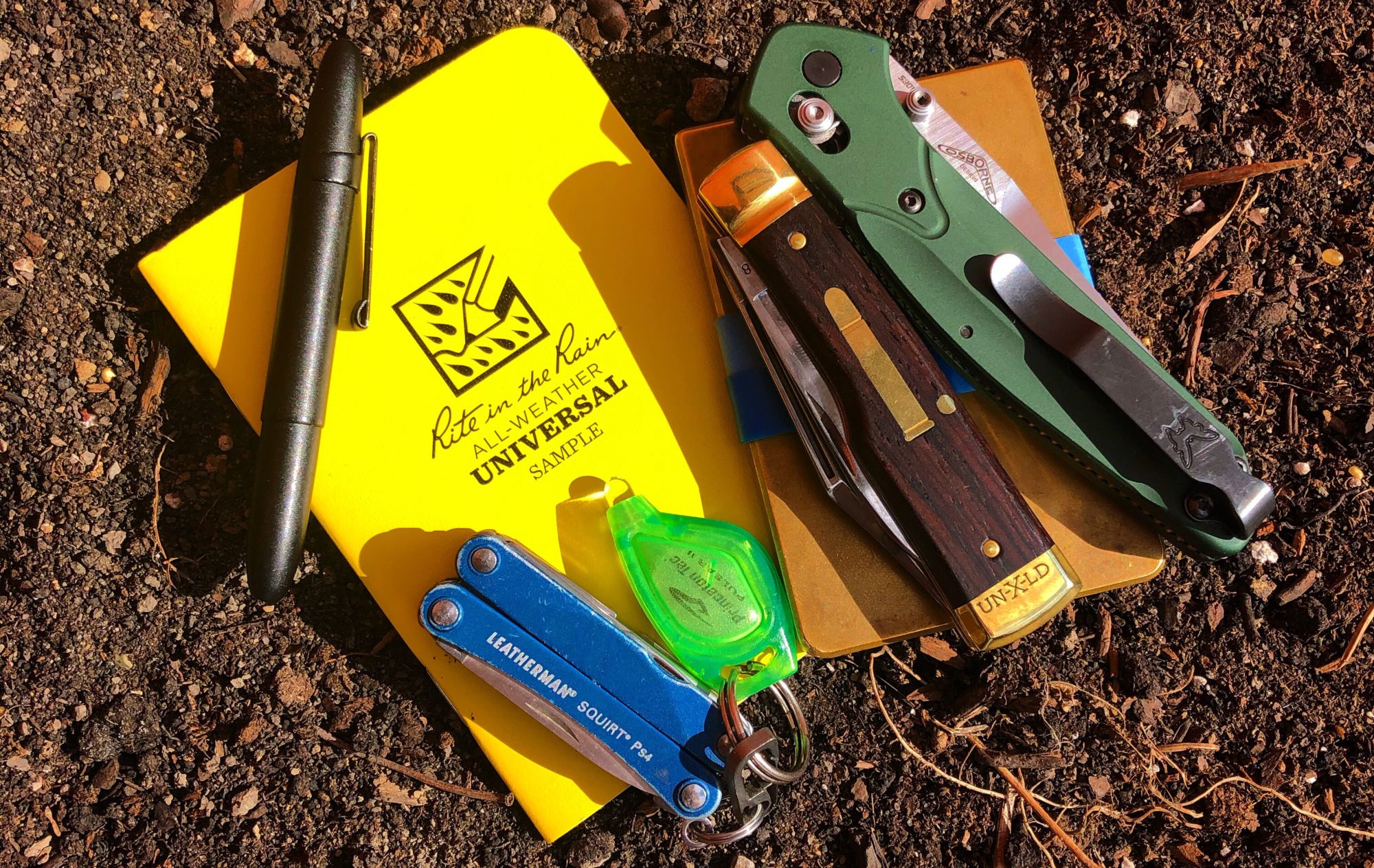Case has been the preeminent producer of traditional pocket knives since the turn of the 20th century, and that means they have built knives on countless patterns. Some of these patterns are made continuously as perennial standbys for the company, like the Peanut and Trapper, but others only appear on certain occasions. Case’s “Out of the Vault” series brings not recently seen patterns back into production, for only one calendar year.
This year’s “Vault” pattern is the Pocket Hunter. The Pocket Hunter is a quirky little pattern that Case seems likely to have invented. It is not one of their oldest patterns, but it hasn’t been produced since its inception in 2001. The Pocket Hunter is a small, like VERY small, version of the classic full size Hunter pattern. It has a tapered handle that turns up at the butt end, with bolsters on both ends. There is a hump, or swell, in the center of the handle on the blade well side. Mine has two blades, a clip point and straight spine (what Case calls a skinner blade), both being full sized. However, like the full sized version, Case has also brought a few single blade versions out of the vault for 2020. It really is just a miniaturized version of the normal (and very large) Hunter pattern in every way.

I personally have been interested in this Pocket Hunter pattern from Case for a few years. I almost purchased a “new old stock”, aka still setting on a dealer’s site in new condition from a previous run, but waffled back and forth too long and let it get bought out from underneath me. So when I heard Case was bringing it out of the vault for 2020 I was pretty excited. Case is of course offering the Pocket Hunter in MANY handle cover material options, but I decided to go with the classic yellow synthetic. I went with this handle not only because it’s budget friendly, but also because it’s a classic traditional Case handle material that I have several knives in and because I got the 2019 Vault knife in the same handle material (you can read my article on that knife here and below). Why not start another set / collection, right?! Anyway, I found myself with a Pocket Hunter in Yellow Synthetic as my example of the Case 2020 Vault Knife.
This knife is made much like other Case knives; built well and completely functional, but noticeably imperfect. it came with some slight gaps between both springs and the corresponding mark side liners. This is certainly not a functional issue, but it is something that collectors will notice. both blades came well centered, with nice opening and closing action, and no blade play in either the open or closed positions. The edges came thin, but shockingly rough. I legitimately would love to know what grit Case uses to sharpen their knives, because it’s pretty amazing how toothy they are. This knife seemed to have a burr on both sides, somehow, and felt almost serrated. Thankfully the Tru-Sharp steel is not difficult to sharpen and I removed the burr relatively easily. Lastly, but not least in my opinion, I have to mention that the shield is unpinned (like all Case shields). I’d much prefer no shield over an only glued shield on a knife in this ~$50 price range. Still, overall it’s a well made knife with no practical issues whatsoever and only minor aesthetic imperfections.

To get to the point, I am thoroughly enjoying this Case Pocket Hunter. If you read my articles or watch my videos you might know I enjoy quirky knives, and this is quirky in just how small it is. It’s a pattern known for being overly large, the full size Hunter, shrunk down to Peanut size (but with two full length blades, which is a bonus over the Peanut). I also enjoy small and large versions of patterns; like the GEC #22/#44, #18/#56, and #06/#97 patterns. It feels good in the hand, despite its small size. It’s easy to carry and should be welcome in all but the most anti-knife environments, thanks to its small size. It has satisfying walk and talk, with solid joints. It’s a small knife with big appeal!

The Pocket Hunter not only fits in your back pocket with ease, it will even fit in the smallest of pockets like the 5th pocket (aka watch pocket) or those ludicrously small pockets in women’s jeans. Its daintiness makes me want to get it in abalone (with the added bonus of the abalone version being shield-less). Despite its diminutive size, it is actually a pretty capable knife. The two full size blades make for more usable edge than a Peanut, despite the Pocket Hunter being shorter when closed, and are both shaped in a way that make them practical for a variety of uses. You know, the kind of stuff you actually use your knives for; cutting strings, opening mail, breaking down boxes, etc. I think this little knife will find its way into my pocket frequently, and if you also enjoy a tiny knife that punches above its weight in usefulness then I think it should find its way into your pocket also!

I sincerely thank you for your time, support, and interest! Don’t forget to tell your friends about KnifeThoughts.com, subscribe via email, and share this article on social media. You can find Knife Thoughts on YouTube where I have hundreds of knife videos, as well as on Instagram and Facebook! You can find all my latest links at LinkTr.ee/KnifeThoughts





























